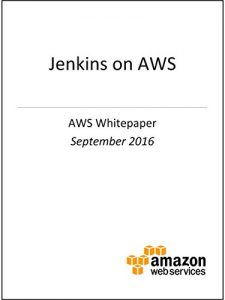September 2016
Although there are many ways to deploy the Jenkins open-source automation server on Amazon Web Services (AWS), this whitepaper focuses on two specific approaches. First, the traditional deployment on top of Amazon Elastic Compute Cloud (Amazon EC2). Second, the containerized deployment that leverages Amazon EC2 Container Service (Amazon ECS). These approaches enable customers to take advantage of the Continuous Integration/ Continuous Delivery (CI/CD) capabilities of Jenkins. Using an extensive plugin system, Jenkins offers options for integrating with many AWS services and can morph to fit most use cases (e.g., traditional development pipelines, mobile development, security requirements, etc.).
This documentation is offered for free here as a Kindle book, or you can read it in PDF format at https://aws.amazon.com/whitepapers/.
Although there are many ways to deploy the Jenkins open-source automation server on Amazon Web Services (AWS), this whitepaper focuses on two specific approaches. First, the traditional deployment on top of Amazon Elastic Compute Cloud (Amazon EC2). Second, the containerized deployment that leverages Amazon EC2 Container Service (Amazon ECS). These approaches enable customers to take advantage of the Continuous Integration/ Continuous Delivery (CI/CD) capabilities of Jenkins. Using an extensive plugin system, Jenkins offers options for integrating with many AWS services and can morph to fit most use cases (e.g., traditional development pipelines, mobile development, security requirements, etc.).
This documentation is offered for free here as a Kindle book, or you can read it in PDF format at https://aws.amazon.com/whitepapers/.






